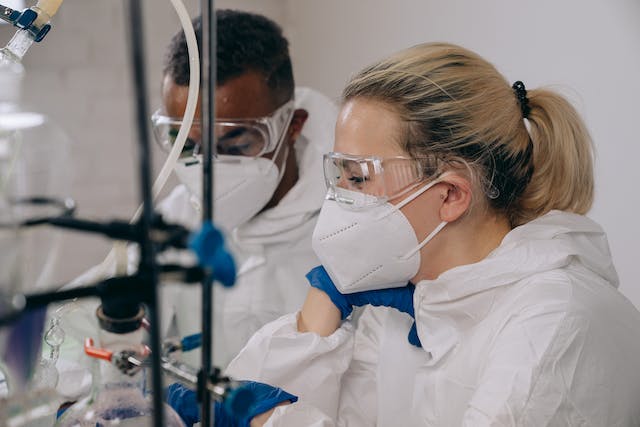Water Pollution in the US: 4 Major Contamination Events in History
Water is essential to life.
Yet, in US history, there have been countless incidents of large-scale public water source pollution, which is a significant threat to human and environmental health. Over the past century, the nation has witnessed several major contamination events that have had far-reaching consequences.
According to U.S. Geological Survey research, over 45% of the country’s tap water sources are contaminated with per- and polyfluorinated alkyl substances, or PFAS. The research reveals that contamination levels are higher in urban areas. Moreover, the researchers estimate that only about 25% of tap water sources in urban areas might be PFAS–free.
These chemicals are only among the countless others that are polluting the drinking water of the country. While regulations have improved to prevent such crises, it’s important to learn from the past.
Here are four major examples of water contamination that impacted public health in the US.
Table of Contents
The Cuyahoga River Fire (1969)
The Cuyahoga River, flowing through Cleveland, Ohio, was once one of the most polluted rivers in the country due to years of unregulated industrial dumping of chemicals, oil, and waste.
The river caught fire over 10 times from 1868 to 1969. The most infamous blaze occurred in June 1969, causing over $100,000 in damage to railroad bridges and nearby buildings. Photos of the flaming river helped ignite the public demand for better regulations to stop water pollution.
In 1972, the Clean Water Act was passed, banning the discharge of oil and toxins into American waters.
Camp Lejeune Water Contamination (1953-1987)
For over 30 years, from the 1950s to 1987, Marines and their families living at Camp Lejeune Marine Corps base in North Carolina drank and bathed in water contaminated by toxic chemicals.
Storage tanks had leaked fuel and solvents like benzene, trichloroethylene (TCE), and perchloroethylene (PCE), into the water supply. Later health studies found elevated rates of leukemia, liver cancer, miscarriages, and birth defects among the hundreds of thousands exposed. According to the Agency for Toxic Substances and Disease Registry (ATSDR) and the Department of Veterans Affairs (VA), as many as one million people may have been exposed to the toxic waters of Camp Lejeune.
According to TorHoerman Law, the affected individuals are still fighting to this day for rightful compensation through ongoing Camp Lejeune lawsuits. As of February 2024, about 150,000 administrative claims and 1,500 cases have been filed. Moreover, the Congressional Budget Office has set aside $6.7 billion for potential compensation.
The fight for justice continues as per the latest Camp Lejeune lawsuit update. As of 2024, affected individuals can still file a lawsuit, and are entitled to compensation, if found eligible. Remember, the deadline for filing a lawsuit is August 10, 2024.
Flint Water Crisis (2014-Present)
In April 2014, the city of Flint, Michigan, swapped its primary water source from Lake Huron to the Flint River to reduce costs.
But as fate would have it, the water from the Flint River was toxic and caused lead to leach from the old pipes into the residents’ tap water. Lead exposure can severely impact child development. Wide-scale blood testing revealed that the number of children with elevated lead levels nearly doubled following the switch.
Residents complained of rashes, hair loss, and foul-smelling water. An outbreak of Legionnaires’ disease was also linked to the contaminated water, causing 12 deaths. Yet despite intense protests, city officials did not admit to a problem until September 2015, when Flint switched back to the Lake Huron supply.
A federal state of emergency was declared in January 2016. In the following year, the U.S. Environmental Protection Agency (EPA) offered US$100 million to rebuild the city’s supply line. This crisis highlights the issues of decaying infrastructure, environmental injustice, and government mismanagement in the predominantly black city.
Millions have been invested to replace lead pipes and provide health services, but the damage cannot be undone.
The Deepwater Horizon Oil Spill (2010)
On April 20, 2010, the Deepwater Horizon oil rig exploded in the Gulf of Mexico. This resulted in one of the worst oil spills in U.S. history.
The rig, operated by BP, was drilling an exploratory well over a mile deep when pressurized methane gas shot up the drill column and ignited. 11 workers were killed, and 4.9 million barrels of crude oil spewed from the ruptured well over 87 consecutive days. Oil spread across 1,300 miles (2,092.15 kilometers) of coastline, endangering wildlife like sea turtles and bluefin tuna.
The spill had devastating impacts on the tourism and fishing industries. Cleanup efforts included burning surface oil, applying dispersants, and deploying absorbent booms. A federal judge ruled BP was primarily responsible for the disaster and levied over $60 billion in criminal and civil penalties, the largest environmental settlement in U.S. history.
The spill highlighted the risks of offshore drilling and showed more stringent regulations are needed.
The cases of water contamination in America’s history teach us important lessons.
These four stories serve as stark reminders of the fragility of our water resources and the importance of constant vigilance in protecting them. Though regulations have improved thanks to past disasters, we must remain vigilant about protecting our precious water resources. Government oversight and corporate responsibility are key to preventing future tragedies. As citizens, we should educate ourselves on local water quality issues and exercise our civil rights to demand strong pollution controls.
Clean water is a basic human right that we must not take for granted. Only through collective action can we ensure all communities have access to safe, clean drinking water for generations to come.










